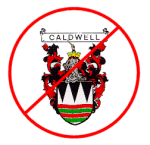 There is no such thing as a ‘coat of arms for a surname’. Many people of the same surname will often be entitled to completely different coats of arms, and many of that surname will be entitled to no coat of arms. Coats of arms belong to individuals. For any person to have a right to a coat of arms they must either have had it granted to them or be descended in the legitimate male line from a person to whom arms were granted or confirmed in the past.
There is no such thing as a ‘coat of arms for a surname’. Many people of the same surname will often be entitled to completely different coats of arms, and many of that surname will be entitled to no coat of arms. Coats of arms belong to individuals. For any person to have a right to a coat of arms they must either have had it granted to them or be descended in the legitimate male line from a person to whom arms were granted or confirmed in the past.
“Coat of Arms” are thought to have originated in Germany in the late 12th century and to have been imported into England by the Normans. The Crusades and the tournaments that drew together knights from many countries caused heraldry to flourish in Europe. The embroidering of family emblems on the surcoat worn over chain mail in the 13th century accounts for the term “coat of arms.” The use of armorial bearings spread rapidly thereafter.
It is also popular misconception that the word ‘crest’ describes a whole coat of arms or any heraldic device. It does not. A crest is a specific part of a full achievement of arms: the three-dimensional object placed on top of the helm.
The right to display arms is reserved to armigers. Armigers are those who have either been granted the right to bear arms by the Crown or the Estates, such as by being granted the titles of Lord/Lady, Baronet, Viscount/ess, Count/ess Royal, and Prince/ss, or those who have earned the right to bear arms by virtue of being Knighted. Non-Knightly armigers may display their arms on their person in any shape so long as it is no more than six inches on its longest edge. Knightly Peers have the further right to display their arms on an heraldic tabard. Landed Knights, and Royal and Imperial Peers have the further right of livery.
Armorial bearings are for distinguishing persons of, and within, a family, cannot descend to, or be used by, persons who are not members of the family. The surname indicates the family to which a family belongs. A person named Macdonald cannot bear a Ross coat of arms, or any part of it. There is no such thing as a “family crest” or “family coat of arms” which anyone can assume, or a whole family can use.
The parts of the armorial bearings consist of:
- The Shield, bearing the basic device
- The Helmet, with its Crest, which sits on top of the helmet
- The Motto in a scroll
- The Mantling or cape, which kept the sun off the wearer’s armour in hot weather
- Very rarely, two Supporters on either side of the shield, which are external attributes of the arms of Peers, Chiefs and a very few other persons of special importance.
There are likely Caldwells who have held “Coat of Arms”, however they technically aren’t something that everyone with the same surname can lay claim to.
Sources:
- College of Arms, U.K.
- Electric Scotland
- Buthlaw’s Armorial
- The Chief Herald of Canada, Canada
